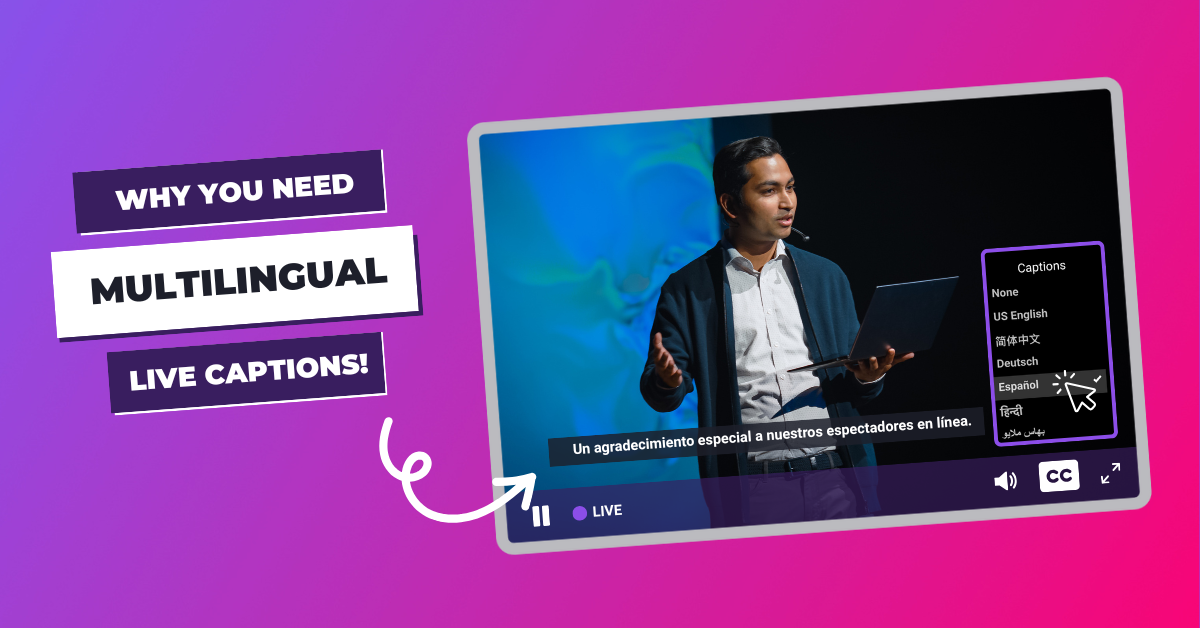VIDEO
Products
Streaming
Deliver flawless live video to any audience, anywhere
OTT Apps
Launch and monetize your own branded TV & mobile apps
Spark Encoder
Tap into hardware encoding that's compact and powerful
Broadcaster App
Go live straight from your phone or tablet with studio-quality control
Features
BoxCast Flow
Ensures smooth playback even on shaky networks
Sharing
Instantly clip, share, and amplify your broadcasts
Producer
Create professional streams right from your browser
Third-Party Encoders
Use the gear you love with our support of RTMP and SRT
AUDIO
RemoteMix
Mix live audio remotely from anywhere in the world
Compatible Mixers
Connect your favorite digital mixer to RemoteMix
INDUSTRIES
House of Worship
Reach and engage your congregation wherever they worship
Sports
Stream games with professional quality for fans everywhere
Local Government
Bring transparency and connection to your community broadcasts
Business
Power your corporate events, webinars, and live streams
LEARN
Blog
Insights, trends, and tips for the audio/video community
Tech Tips
Quick how-tos and deep dives on the latest streaming technology
Guides
Essential tips and expert strategies to expand your reach
Newsletter
Stay up to date with product news, best practices, and more
Podcast
Hear stories and strategies from our customers and experts
DISCOVER
Customer Stories
Explore real-world success stories to inspire your organization
Events
Join us at an upcoming conference and meet with our team
Webinars
Get all the details and register for our next live webinar
About Us
Discover our company's mission, values, and team story
Broadcasting, BoxCast Features + Updates

Brett Bzdafka • October 23, 2025
There are a lot of assumptions about what is and isn’t possible in live streaming. Some relate to the core technology behind video, audio, and latency, while others focus on embedded technologies like captioning and translation. In this post, we’ll set the record straight on multilingual captions. We’ll look at how captioning evolved, explore major advances in accuracy and translation, and explain why multilingual captioning is one of the most valuable upgrades you can make to your live streams today.
The Early History of Multilanguage Captions
Advancements in Streaming Caption Generation, Accuracy, and Translation
The Many Benefits of Multilingual Captions in Live Streaming
Final Thoughts
Closed captioning for prerecorded broadcasts began in 1980. Live television captioning followed in 1982, debuting during that year’s Academy Awards. In 1989, the first caption-decoding microchip was developed, and by 1990, the Television Decoder Circuitry Act required all TVs larger than 13 inches to include built-in caption decoders.
It wasn’t until the late 1990s, though, that U.S. broadcasts started featuring live captioning for Spanish and other languages. In other words, multilanguage captioning is a fairly recent development in broadcast television.
Today, live video streaming has largely replaced traditional broadcast as the primary way audiences watch live content. While streaming began to emerge in the early 2000s, it didn’t fully take off until around 2011–2013. Captioning’s role in this shift is a fascinating story.
In the early days of live streaming, captions were created the old-fashioned way through real-time stenography performed by highly trained professionals. This process was incredibly labor-intensive and expensive, meaning only large organizations could afford it.
In 2009, Google introduced automated English captions for prerecorded videos online. A decade later, in 2019, AWS unveiled support for multilanguage captions. Then, in 2021, YouTube rolled out automatic captions for all channels, while Zoom made automated captioning a standard feature. By 2022, Zoom also introduced translated captions as part of select plans.
All of this progress highlights how recently captioning, especially multilanguage captioning, has become productized for broadcasters to consider adding to their live events.
Accuracy has improved dramatically, too. In 2010, automated captions in streaming hovered around 60–70% accuracy. That climbed to 85% by 2015, 90% by 2020, and now typically reaches 95–98% in 2025. Meanwhile, professional stenographers still achieve over 99% accuracy, though at a much higher cost.
The pandemic accelerated innovation, pushing many platforms to add multilingual support and real - time translation. What was once a manual task and a luxury for broadcast networks is now an attainable auto-generated feature for live streamers.
Now that it’s clear that automated, live, and multilingual captions are fully possible for streamers today, the next question is whether they’re worth it. For broadcasters whose communities include multiple languages, the answer is obvious. But multilingual captioning delivers value far beyond language inclusion. Below, we’ll outline several powerful benefits that every live broadcast can gain by adding this functionality.

Let’s start with the obvious ones:
Now for the benefits you might not expect:
When you consider that automated captions are much more affordable than hiring human captioners and that they can expand your audience while improving discoverability, it’s hard to find a reason not to use them.
So why doesn’t everyone use multilingual captions? Often, it comes down to cost or limited platform support. At BoxCast, we wanted to remove those barriers entirely.
Automated captioning for recorded broadcasts is available on all BoxCast plans. You can review and edit transcripts, adjust timestamps, filter profanity, and replace specific words. Most importantly, you can add multilingual translations, selecting up to five languages of your choice from a library of options other than English for your viewers to choose from.
Live automated captioning is included in select BoxCast plans (and available as an add-on for others), bringing the same multilingual value to real-time events. Overall, we’ve invested in building out a robust and customizable suite of captioning features to help you meaningfully connect with more potential viewers who would normally be held back by an audio only, English only live stream.
If you’re not using multilingual captions today and want to learn more, dive a bit deeper into how easy it is to enable multilingual captions with BoxCast.
© 2025 BoxCast. All Rights Reserved. | +1-888-392-2278